In questa galleria un piccolissimo assaggio del patrimonio archeologico della Bretagna.
Il grande Menhir spezzato, è il più grande eretto nella storia occidentale: un blocco di granito alto 20 metri che ora giace a terra spezzato in quattro parti. Questo blocco di 280 tonnellate è fatto di un granito estraneo alla penisola di Locmariaquer. Ancor oggi non si capisce con quali tecniche abbiano potuto portarlo qui ed erigerlo in posizione eretta. La datazione è attorno al 4500 a.c.
Il dolmen della Table des Marchand fu costruito intorno al 3900 a.c. ed è stato utilizzato fino al 2000 a.c. La forma a ogiva e la cornice di questa lastra, la inseriscono nella categoria degli idoli a scudo, molto diffusi. Gli archetti scolpiti, sono ricorrenti nell'arte neolitica e si suppone che rappresentassero il potere divino. Anche la lastra di copertura riporta delle incisioni, un’ascia e un archetto.
Gli allineamenti di Carnac sono dei complessi megaltici unici al mondo. In tre siti diversi troveremo dei menhir eretti e allineati sul terreno in file lunghe di circa 1 km. Complessivamente sono 3000 eretti tra 5000 e 3000 a.c. La loro funzione è ancora oggetto di studio.
Menhir Men Marz con i suoi 8,5 metri di altezza e la massa di 80 tonnellate è uno dei quattro menhir più alti di Francia. Esso è semplicemente appoggiato al terreno e non interrato come altri, risale ad un periodo tra 4500 e 2500 a.c. ed è stato .cristianizzato come il menhir Sant Uzec (in bretone Kalvar Zant Uek) costruito tra il 5000 e 4000 a.c. misura 7,5 metri. Nel XVII secolo furono scolpite le iconografie comuni a quell’epoca.
La necropoli megalitica di pointe du souc’h fa parte della tradizione culturale delle tombe a dolmen apparse nel neolitico tra il 4500-3500 a.c. cha hanno avuto uno straordinario sviluppo nell’ovest della Francia. Poste in luoghi elevati e lontano dai luoghi di vita queste sepolture collettive si presentano a forma di grandi monumenti a pietra sigillando diverse camere funerarie.
In this gallery a very small taste of the archaeological heritage of Brittany.
The Great Broken Menhir is the largest erected in Western history: a 20-meter-high block of granite that now lies on the ground broken into four parts. This 280-ton block is made of a granite unrelated to the Locmariaquer peninsula. Even today it is not clear with what techniques they were able to bring it here and erect it in an upright position. The dating is around 4500 BC.
The Table des Marchand dolmen was built around 3900 BC. and was used until 2000 BC. The ogive shape and the frame of this slab place it in the category of shield idols, very widespread. The carved arches are recurrent in Neolithic art and are supposed to represent divine power. The cover plate also has engravings, an ax and a bow.
The Carnac alignments are unique megaltic complexes in the world. In three different sites we will find menhirs erected and aligned on the ground in long lines of about 1 km. Altogether they are 3000 erected between 5000 and 3000 BC. Their function is still under study.
Menhir Men Marz with its 8.5 meters high and the mass of 80 tons is one of the four tallest menhirs in France. It is simply resting on the ground and not buried like others, it dates back to a period between 4500 and 2500 BC. and was Christianized as the menhir Sant Uzec (in Breton Kalvar Zant Uek) built between 5000 and 4000 BC. measures 7.5 meters. In the seventeenth century, the iconographies common to that era were sculpted.
The megalithic necropolis of pointe du souc'h is part of the cultural tradition of dolme tombs that appeared in the Neolithic period between 4500-3500 BC. which have had an extraordinary development in western France. Placed in elevated places and far from the places of life, these collective burials are in the form of large stone monuments sealing several burial chambers.
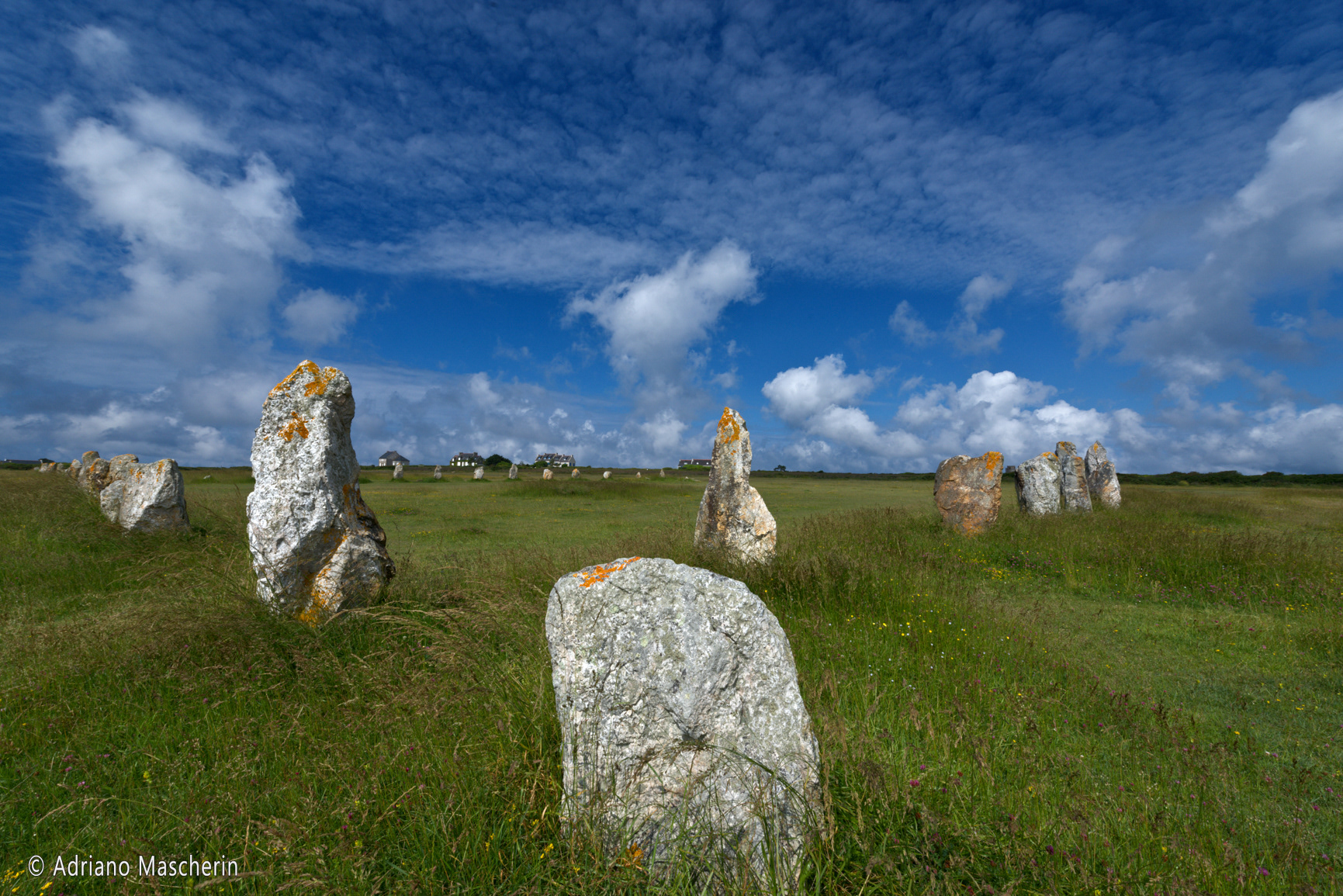
Camaeret su Mer - Menhir de Lagatjar
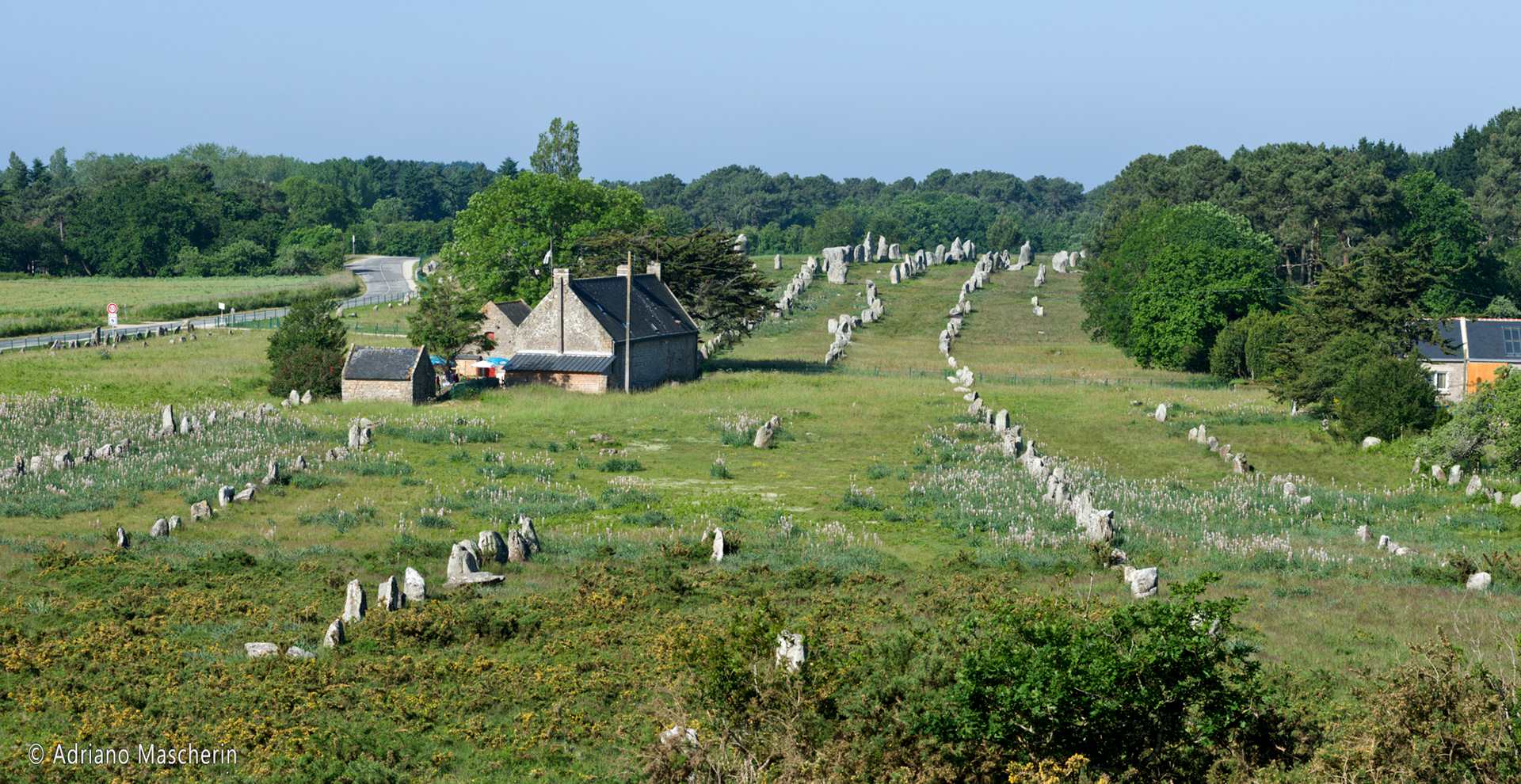
Carnac - Alignement de Kemario

Carnac - Alignement de Menec

Carnac - Alignement de Menec

Kerverven - Menhir Men Marz
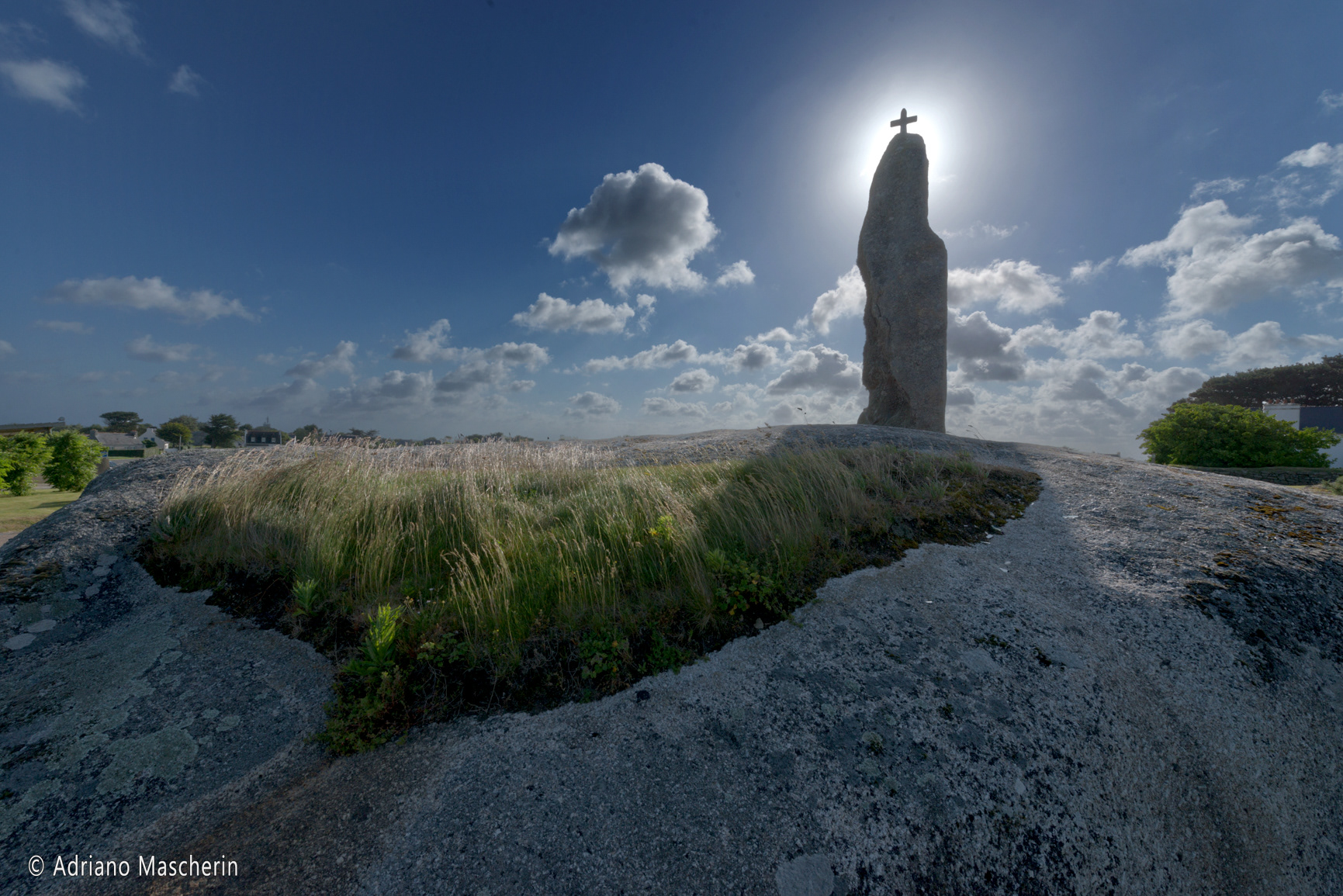
Kerverven - Menhir Men Marz

Locmariaquer - Menhir Brisé
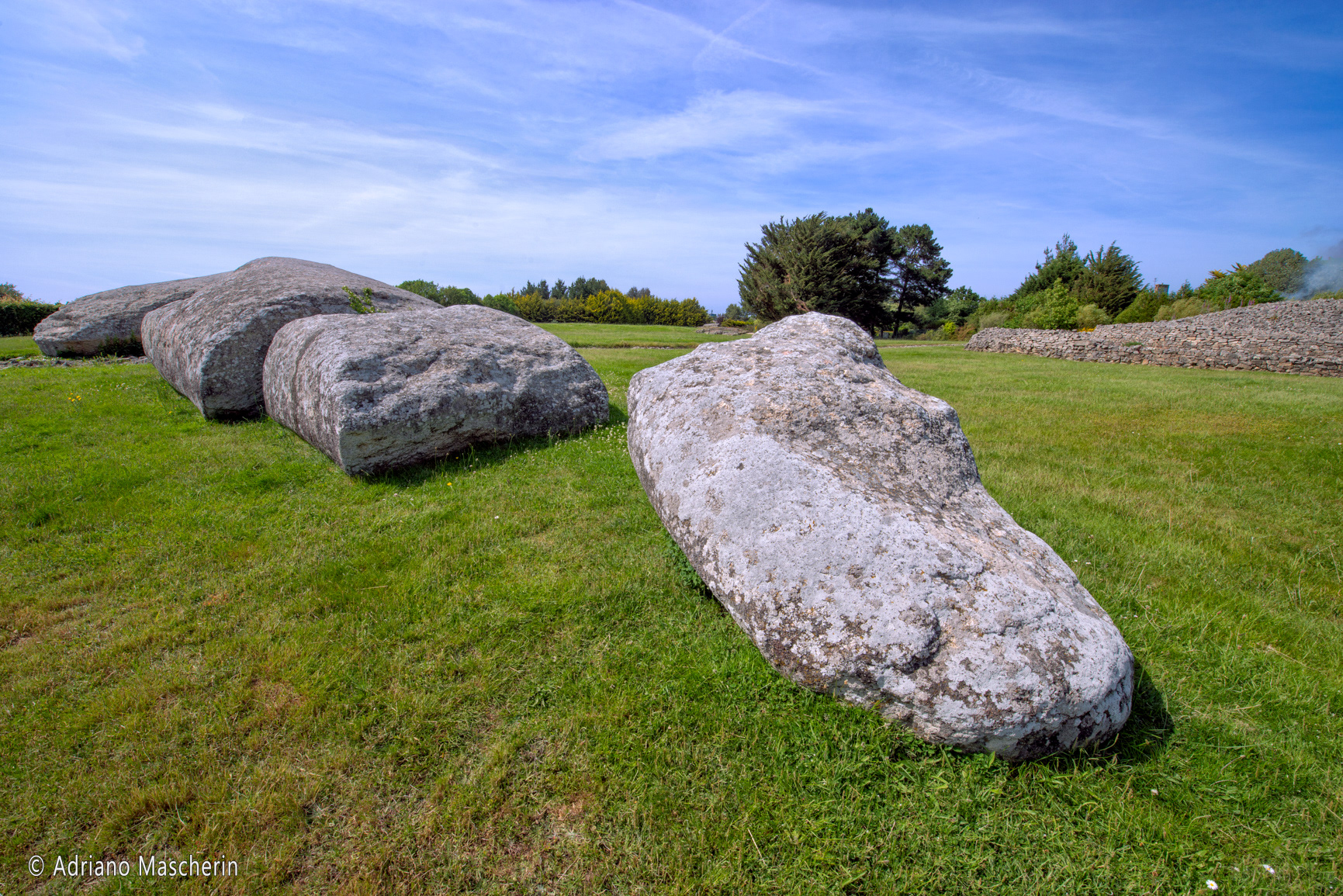
Locmariaquer - Menhir Brisé
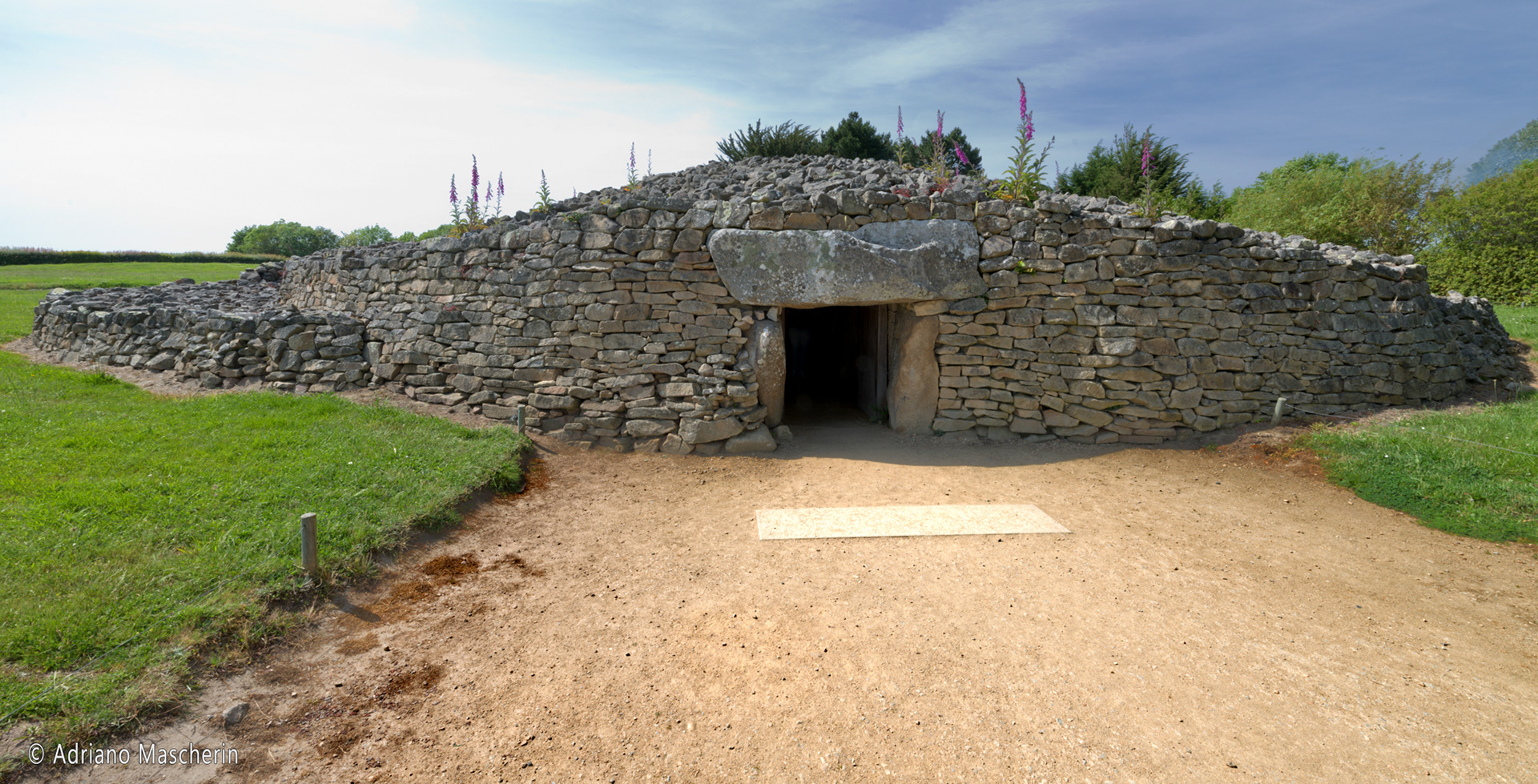
Locmariaquer - Table des Marchands
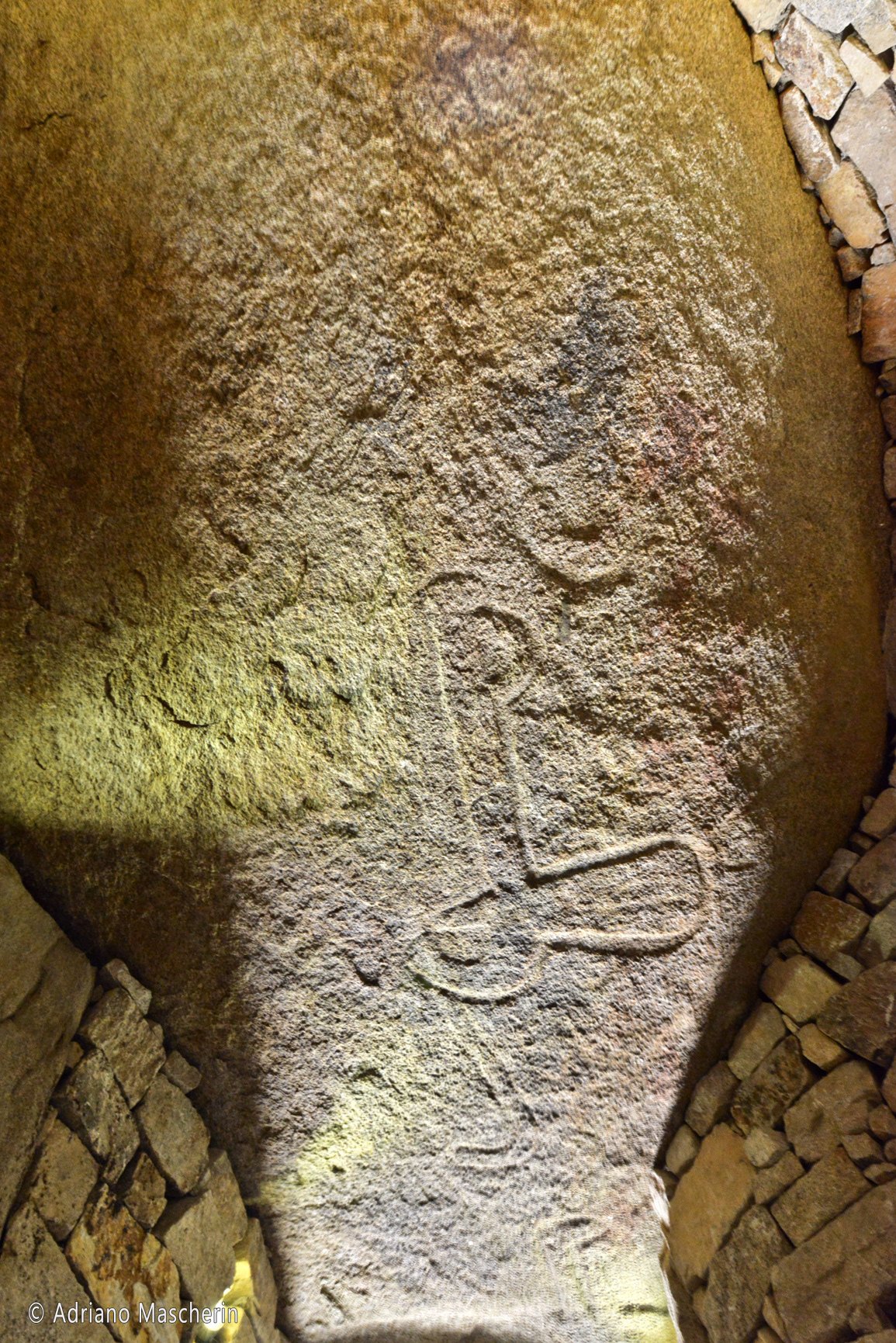
Locmariaquer - Table des Marchands
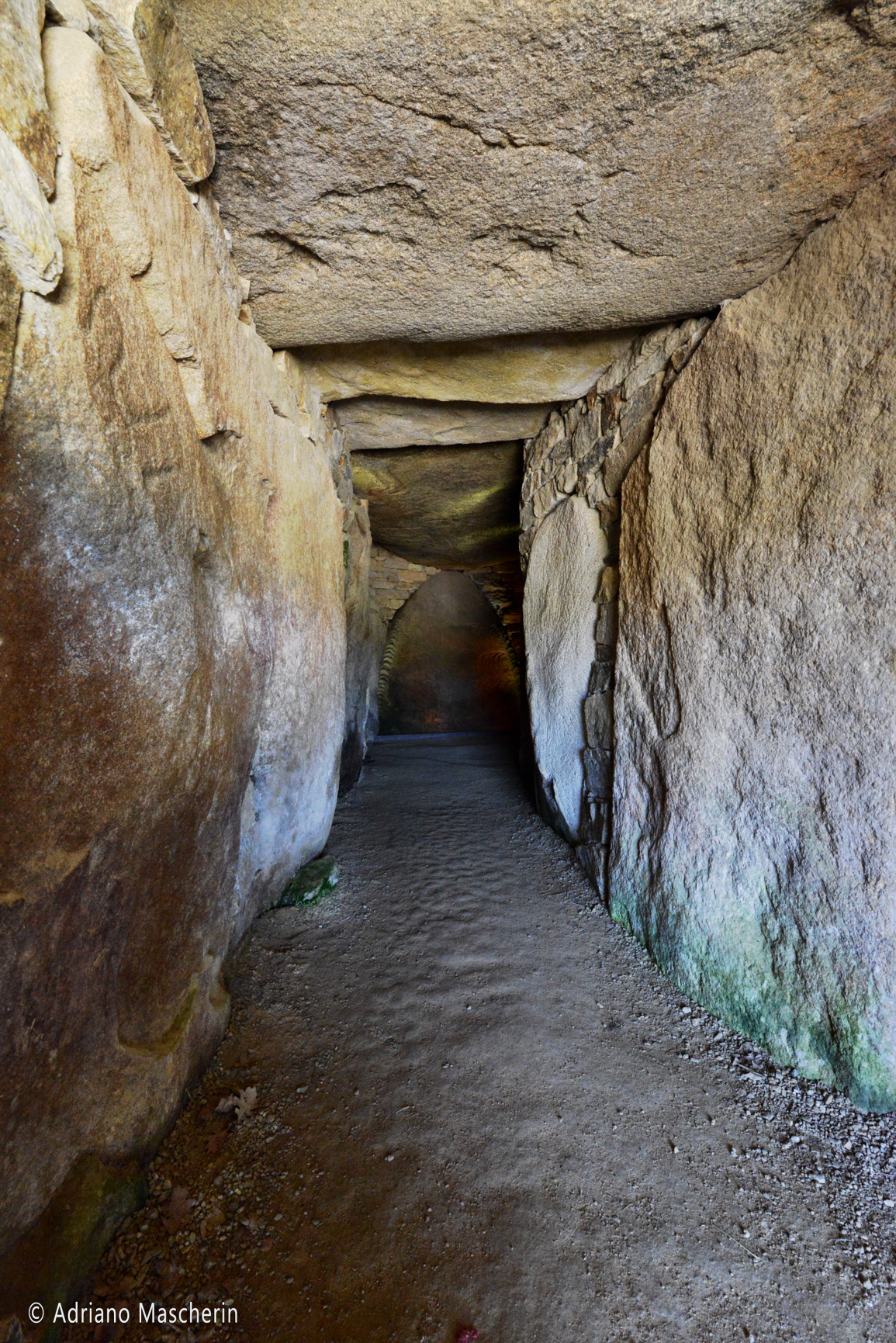
Locmariaquer - Table des Marchands
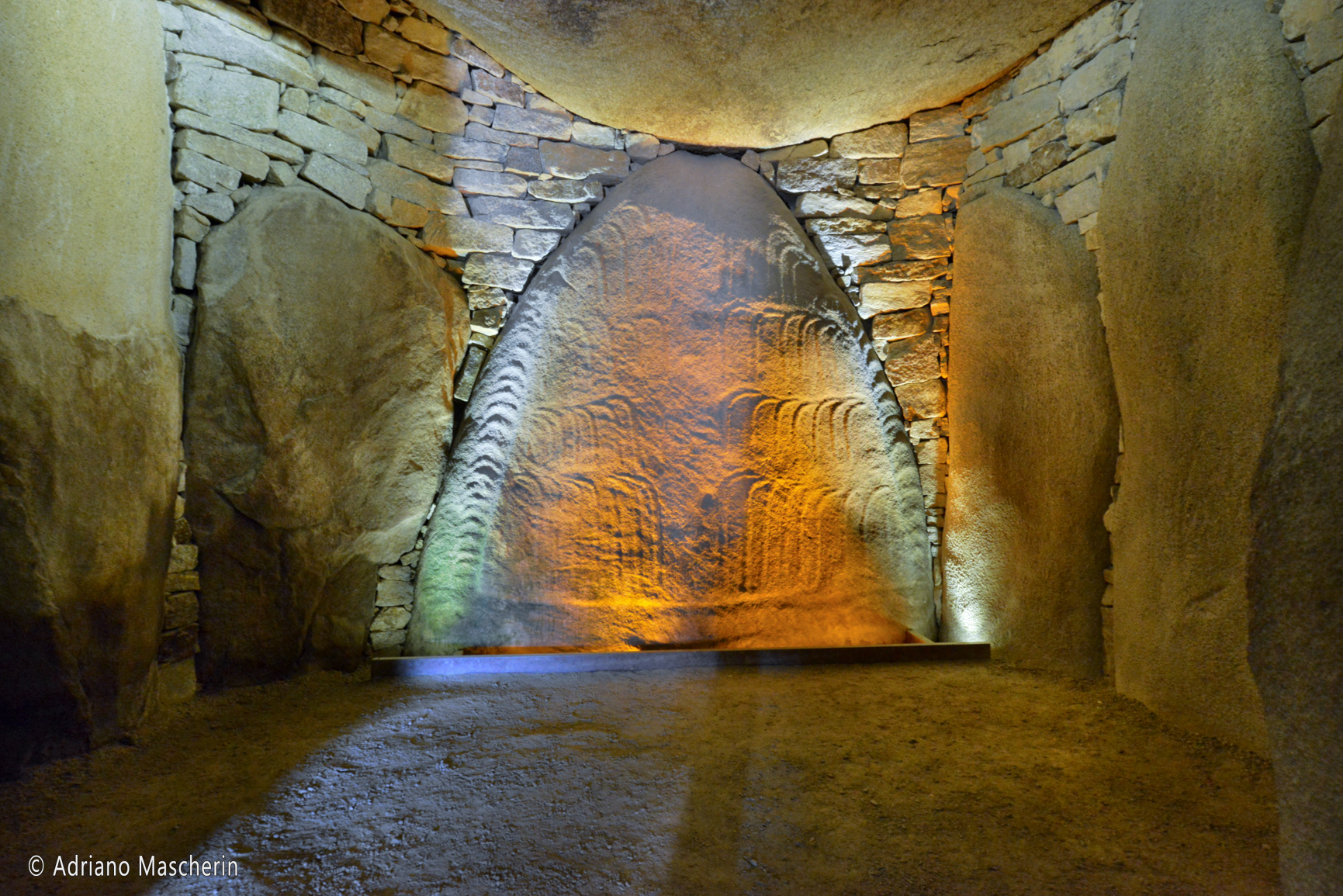
Locmariaquer - Table des Marchands
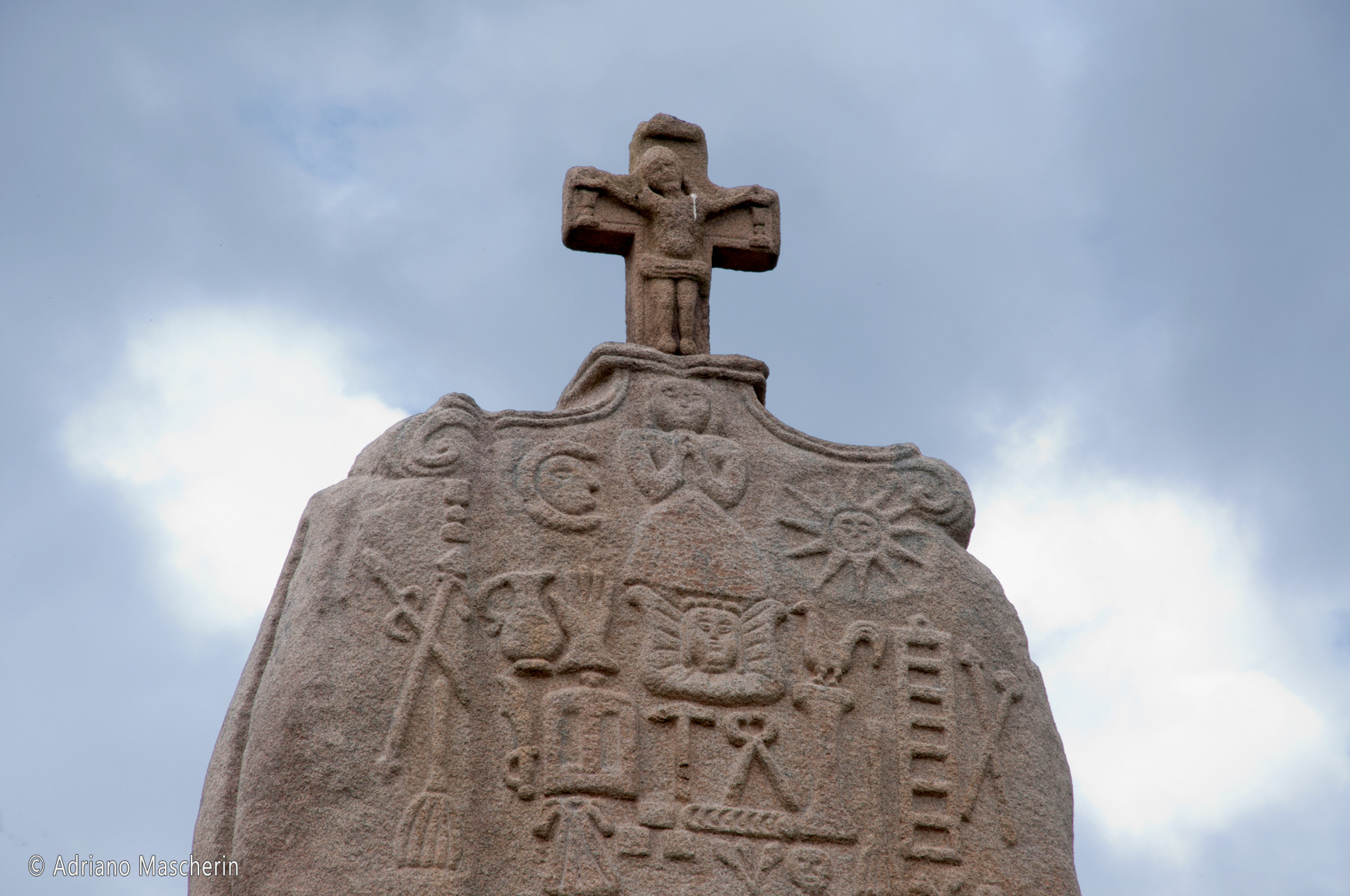
Plomeur - Menhir Sant'Uzec
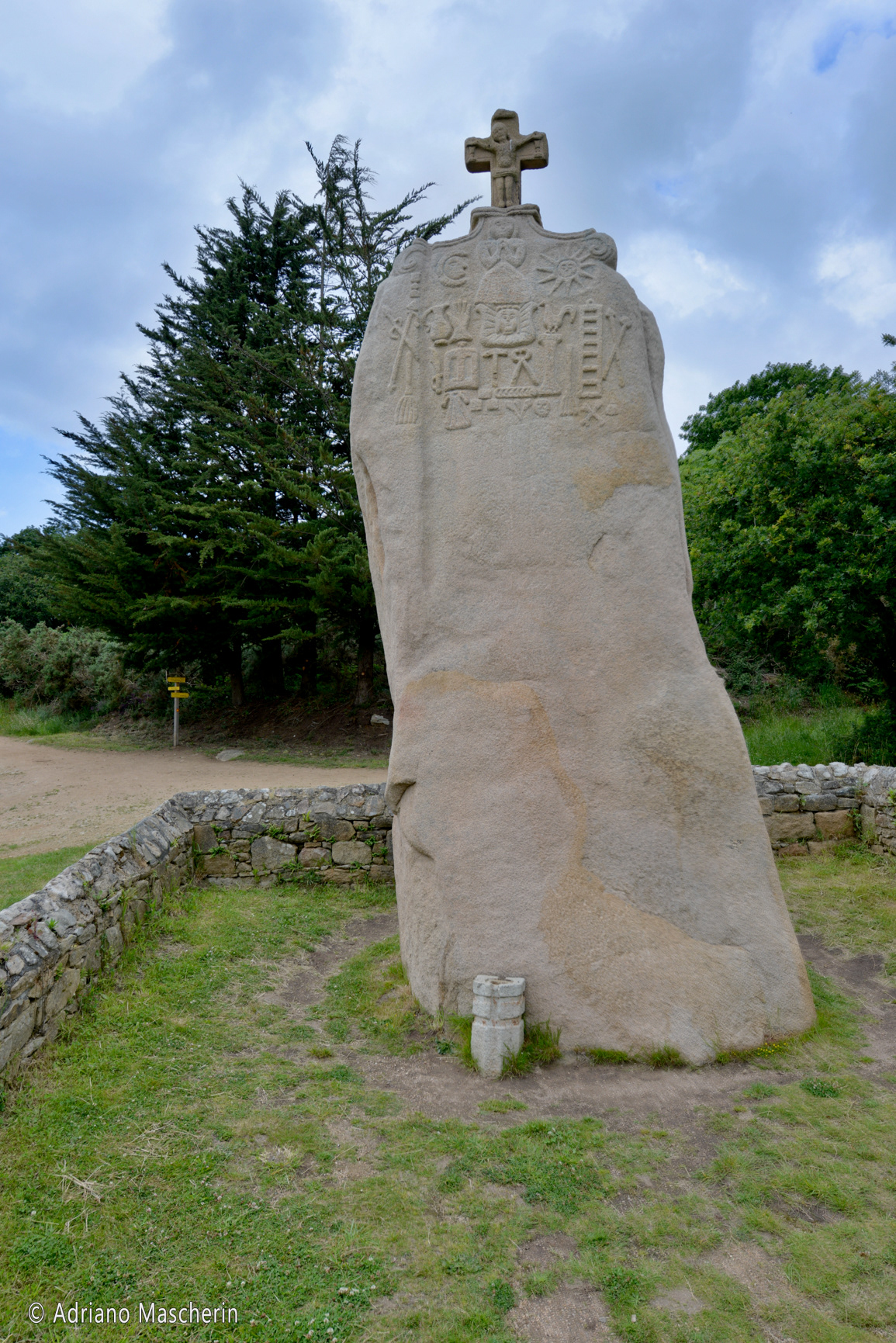
Plomeur - Menhir Sant'Uzec

